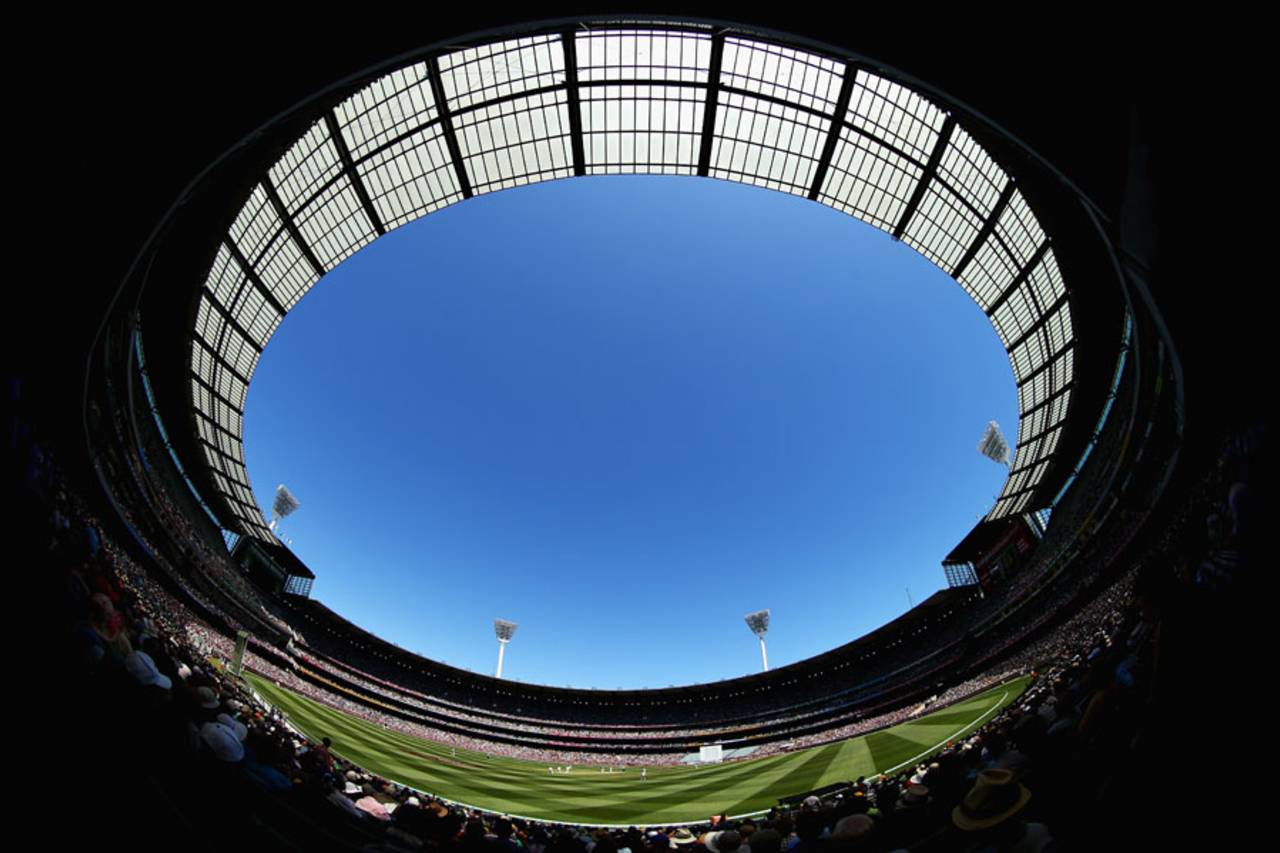I was in Bentota, Sri Lanka, recently. Galle is an hour's drive from there. How could I not go the stadium that had hosted one of the greatest Test innings I have seen?
Galle is the anti-MCG. It is a lovely little stadium. But sitting among the remnants of the Galle fort, which overlooks the stadium, can give an MCG-like experience too, a bit like being in the top-most tier at the MCG. If that is not enticing enough, tilt your head to the left and you get a stunning view of the Indian Ocean. The next time I watch a Test in Galle, I am not buying tickets unless they start selling tickets for the fort view.
If watching a match live at a ground is an enriching experience, there's something about visiting a stadium when it's not hosting a game as well. Not just because grounds serve as memorials for all the sporting deeds performed there. A visit to a stadium is not merely an item to be ticked off on a checklist or a subject for a Facebook update. It provides a perspective that is missing in today's homogenised television coverage.
I thought I understood the greatness of Virender Sehwag's double-hundred
in Galle. To handle Murali and Mendis at their best with ease, when the rest of India's famed batting order is struggling to pick either convincingly, is no mean task. To take them on and thrash them around the park like club bowlers isn't relatable in a non-Sehwag world. Two hundred and one out of a team total of 329. That is just ridiculous.
While all that can be appreciated from watching it on TV, what can't be gauged is the sheer physical effort of batting for so long in such conditions. For someone who grew up predominantly in the humid city of Chennai, I was reaching for the water bottle every ten minutes. While the story of
Dean Jones cramping, dehydrating and puking in Madras in 1986 is celebrated, what is often ignored is that conditions vary a lot within the subcontinent too. For some Indian players, for example, conditions in Galle would be as alien as Chennai is to Australians.
A stadium visit isn't just about enriching the experience of watching a match or about adding perspective to past matches. I also tend to appreciate matches played in the stadiums I have visited better on TV after the visit. For instance, I understand why sometimes a visiting captain will take a while to get his fine-leg fielder right at Trent Bridge. Or why a certain player will not be made to field near Bay 13 at the MCG.
While we may not visit stadiums in the way people go to memorials, they do serve as wonderful memorials too. When I entered Edgbaston for the first time, I couldn't help but suspend reality for a few minutes and visualise Tendulkar's
masterful century in the 1996 series being played out in front of me. To go to the SCG and time-travel to 1992 to watch the genius of
Brian Lara's 277 is pure indulgence.
For all the elegance, beauty and intimacy of cricket stadiums around the world, there is no match for the experience of the MCG. You take a stroll outside the stadium and see the statues of the great cricket heroes. There is Bradman raising his bat, Ponsford setting off for a run, Lillee in all his brutal beauty, Warnie about to unravel the magic. You walk in and it's an amphitheatre. It's long, wide and huge. It's everything you see on TV and some more. Stunning.
Let it all sink in. Check one of the boxes on your bucket list. Stand at the top of the Southern Stand. Now travel back in time to the '70s. Let
Chris Ryan's words ticker across: "Lillee was sex on legs and MCG was his favourite tabletop." Visualise a packed MCG and Lillee walking back to his mark, flicking the sweat drops with his index finger.
Lillee at the top of his run-up.
Damn, I was born in the wrong generation.
